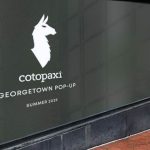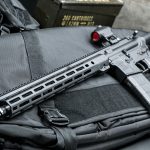Columbia Sportswear's third quarter results came in well above prior projections as demand and shipments of fall products rose. With improving backlogs, the outerwear giant also raised its full-year revenue outlook.
On a conference call with analysts, Tim Boyle, president and CEO, said that while sales were down 4% in the third quarter, they were more than $30 million above an outlook given in July, driven by “greater-than-expected demand” in the U.S. and better inventory availability to fulfill that demand. U.S. sales declined only 1% in Q3, partly reflecting cold weather in key regions. But Boyle also believes brand rebuilding and product initiatives launched two years ago are beginning to bear fruit.
“The weather helps, but we also believe our innovative products, enhanced design, and increased marketing investments are beginning to drive consumer demand,” said Boyle.
Spring 2010 backlogs were down 5%, including a benefit of 2 percentage points from fluctuations in currency exchange rates. The decline reflects a 22% drop in the EMEA region. Backlog in the U.S., Canada and Latin America & Asia Pacific (LAAP) regions were each essentially equal to Spring 2009 wholesale backlog. Global apparel and footwear wholesale backlog each declined mid-single-digits on a percentage basis.
Of the 3% decline in sales during the quarter, 1% reflected changes in foreign currency exchange rates.
By region, U.S. sales decreased 1% to $267.4 million. A mid-single digit decline in US wholesale due in part to the liquidation or reorganization of several retailers was offset by a significant increase in U.S. retail. Forty seven stores were open at the quarter's end versus 29 at the same time last year.
On a product category basis, the 1.4% U.S. sales decrease reflected a low-single-digit percentage decline in the Columbia brand apparel business, with the decline skewed more towards sportswear than outerwear. That offset a low-teens gain in U.S. footwear sales, driven by Sorel.
EMEA sales declined 13.4% to $67.7 million, including a 3 percentage point drag from foreign currency exchange. Sales in both the direct and distributor business declined low teens. The decline was consistent with the fall backlog announced in April and reflects the “significant macroeconomic challenges” in Russia, together with the brand challenges faced in Western Europe.
Footwear was also a bright spot in this region with the Sorel brand driving a 10% sales increase.
Sales in the LAAP (Latin America/Asia Pacific) region declined 3.9% to $44.3 million, including a 2 percent negative currency impact. The decline primarily reflected challenges in Argentina and Chile. Japan is also seen as softening while Korea delivered a robust quarter. Sales to LAAP distributors declined 30% due to the rescheduling of some orders for southern hemisphere distributors from mid-year to Q4.
Third quarter sales in Canada declined 3.0%, but were up 2% in local currency. Footwear sales jumped 20% in the country, driven by Sorel. The soft fall 2009 order book for Canada includes planned reductions in some channels of distribution, which will impact Q4 sales comparisons by a greater degree.
By product category, Outerwear sales decreased 5% to $191.1 million. A sales decline in the Columbia brand in the U.S. wholesale and European direct businesses offset a sales increase in U.S. retail and Japanese businesses.
Sportswear sales declined 9.3% to $142.9 million, mostly related to Columbia brand sales declines in the U.S. wholesale, European direct and Canadian businesses. A decline in LAAP distributor sportswear sales was due in part to the afore-mentioned rescheduling of some orders for southern hemisphere distributors from mid-year to the fourth quarter.
Footwear sales increased 10.5% to $70.3 million, mostly attributable to increased Sorel brand footwear sales, as well as gains in its European direct, U.S., and Canadian businesses. Accessories and equipment sales slipped 2.2% to $22.2 million.
From a brand perspective, Columbia sales declined 6.3%, to $390 million, Mountain Hardwear sales were flat at $35.2 million, and Sorel sales jumped 42.1% to $27.0 million.
Columbia gross margins contracted by 130 basis points in Q3, primarily due to lower outerwear gross margins in the North American wholesale and European direct and distributor businesses, and unfavorable effects of foreign currency hedge rates in Canada.
SG&A expense increased to 28.6% of sales from 26.7% as direct-to-consumer initiatives offset cost reduction moves.
Earnings in the third quarter were down to $1.38 a share from $1.69 a year ago but it was better than Wall Street's consensus estimate of $1.00 due to healthier sell-throughs.
Boyle pointed out that its flat U.S. backlog was particularly notable since its Spring 2009 backlog included orders placed by several significant customers that have since liquidated or reorganized operations during 2009. He also noted that Columbia's U.S. retail partners indicated during Spring 2010 booking that their open-to-buy dollars were, in many cases, down double digits compared with their spring 2009 open to buy.
“With that as a backdrop, our flat U.S. backlogs [show] that the Columbia brand gained market share,” said Boyle. “We believe this is a reflection of a better reception of our innovative products by retailers, despite the overall weak economic conditions that we are operating against.”
Boyle also noted that its U.S. backlog includes increased orders from specialty stores, which reach the consumers buying Columbia's best products. Fall sell-throughs at both full-line sporting goods stores and specialty outdoor stores have “been quite good,” he said.
Nonetheless, Boyle said that in the U.S., consumer demand “is unlikely to mount a sustained recovery” until employment improves and debt delinquencies and mortgage foreclosures decline.
For FY09, sales are now expected to decline 8% to 9% versus a prior outlook calling for a low double-digit decline. The revised outlook anticipates a mid-teen percentage decline in wholesale and distributor sales, partially offset by incremental sales from the company's direct-to-consumer business. FYO9 gross margins are expected to decline by approximately 100 basis points primarily due to a higher volume of closeout product sales and the negative effects of foreign currency hedge rates. Operating margin is expected to decline approximately 300 basis points, which includes a $24.7 million impairment charge. Planned investments in direct-to-consumer initiatives will also impact margins.















